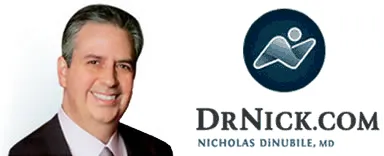“The Human Body is the only machine that breaks down when not used.” Thomas Cureton
I’ve been fortunate over the years to work with many high level athletes — professional and Olympic caliber. I think I’ve helped many of them from a medical standpoint, but I also learned a great deal from working with them. This is especially true of the successful ones, and the ones with staying power. One important lesson involves a certain wisdom of the human body that athletes and dancers seem to know instinctively. Unfortunately, it’s taken us in the medical community much longer to catch on to this seemingly simple concept — use it or lose it!
I’ve seen it over and over especially dealing with injured athletes and dancers. When an injury sidelines an athlete every effort should be made to keep that individual in tip-top shape while the injury heals. The injured part can be protected and with some creativity, programs can be designed to keep all parts moving and functional without jeopardizing healing. This includes the three pillars of fitness: cardiovascular or aerobic, strength, and flexibility. In fact, this approach promotes healing and helps keep the positive outlook essential for normal healing, recovery and return to action. We have even learned that properly and safely mobilizing or moving the injured body part itself allows for a better, stronger healing response than allowing it to get stiff and weak through immobilization and disuse. I call this treatment mindset change “the movement movement” which is in sharp contrast to what I was taught in my early training (and also personally experienced with a football related knee injury), which was to immobilize almost every injured body part!
This approach has revolutionized not only how we treat athletes but there is a lesson for all of us, young and old in every field, both injured and non-injured. Everyone risks tremendous health hazards by giving up activity and exercise. Sedentary behavior, all too common place in our nation, is extremely dangerous for the human body resulting in gradual breakdown and malfunction. Unfortunately many of these structural changes occur silently, without warning to us. The good news is that it’s never too late to reverse these changes.
We can all learn a lesson from Doris, my 70+ year old patient. She is an inspiration in making movement and fitness a priority in her life. Doris says, “if you rest, you rust”. She even rode her bike to the hospital the day she was to have a hip replacement. Her post-op recovery was phenomenal — as rapid as I’ve ever seen.
FitTip
Take a lesson from Doris and the pros. You were built to move. Take a walk, join a health club. Find ways to activate your life to keep you strong in the game of life.
Follow Dr. Nick!
